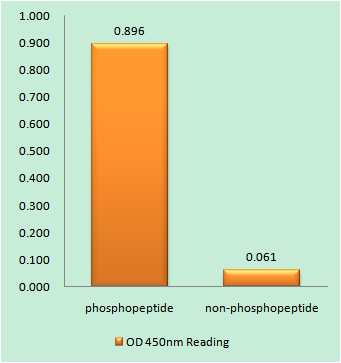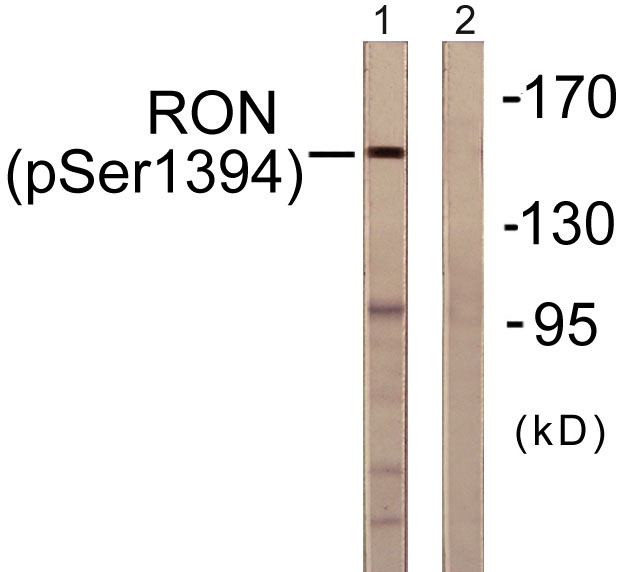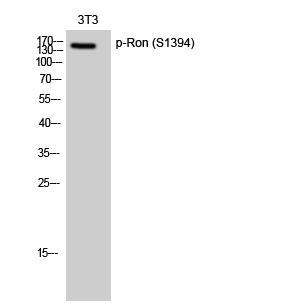产品名称
Ron (phospho Ser1394) Rabbit Polyclonal Antibody
别名
MST1R; PTK8; RON; Macrophage-stimulating protein receptor; MSP receptor; CDw136; Protein-tyrosine kinase 8; p185-Ron; CD antigen CD136
蛋白名称
Macrophage-stimulating protein receptor
存储缓冲液
Liquid in PBS containing 50% glycerol, 0.5% BSA and 0.02% New type preservative N.
Human Gene Link
http://www.ncbi.nlm.nih.gov/sites/entrez?db=gene&term=4486
Human Swissprot No.
Q04912
Human Swissprot Link
http://www.uniprot.org/uniprotkb/Q04912/entry
Mouse Gene Link
http://www.ncbi.nlm.nih.gov/sites/entrez?db=gene&term=19882
Mouse Swissprot No.
Q62190
Mouse Swissprot Link
http://www.uniprot.org/uniprot/Q62190
免疫原
The antiserum was produced against synthesized peptide derived from human CD136/RON around the phosphorylation site of Ser1394. AA range:1351-1400
特异性
Phospho-Ron (S1394) Polyclonal Antibody detects endogenous levels of Ron protein only when phosphorylated at S1394.
稀释度
WB 1:500-2000;IHC-p 1:50-300
宿主
Polyclonal, Rabbit,IgG
背景介绍
This gene encodes a cell surface receptor for macrophage-stimulating protein (MSP) with tyrosine kinase activity. The mature form of this protein is a heterodimer of disulfide-linked alpha and beta subunits, generated by proteolytic cleavage of a single-chain precursor. The beta subunit undergoes tyrosine phosphorylation upon stimulation by MSP. This protein is expressed on the ciliated epithelia of the mucociliary transport apparatus of the lung, and together with MSP, thought to be involved in host defense. Alternative splicing generates multiple transcript variants encoding different isoforms that may undergo similar proteolytic processing. [provided by RefSeq, Jan 2016],
组织表达
Expressed in colon, skin, lung and bone marrow.
细胞定位
Membrane; Single-pass type I membrane protein.
功能
catalytic activity:ATP + a [protein]-L-tyrosine = ADP + a [protein]-L-tyrosine phosphate.,function:Receptor for macrophage stimulating protein (MSP). Has a tyrosine-protein kinase activity.,PTM:Phosphorylated in response to ligand binding.,PTM:Proteolytic processing yields the two subunits.,similarity:Belongs to the protein kinase superfamily. Tyr protein kinase family.,similarity:Contains 1 protein kinase domain.,similarity:Contains 1 Sema domain.,similarity:Contains 3 IPT/TIG domains.,subunit:Heterodimer formed of an alpha chain and a beta chain which are disulfide linked. Binds PLXNB1. Associates with and is negatively regulated by HYAL2.,tissue specificity:Keratinocytes and lung.,
纯化
The antibody was affinity-purified from rabbit antiserum by affinity-chromatography using epitope-specific immunogen.



